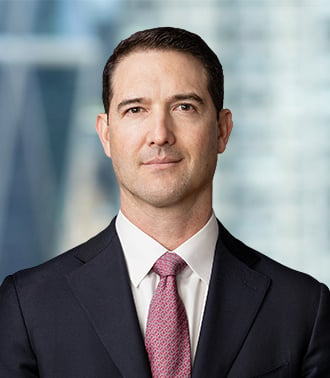Which Way Does the Wind Blow? DOI’s Order Halting New York’s Offshore Wind Project and What the Order Signals for the Future
The Secretary of the U.S. Department of the Interior (DOI), Doug Burgum, ordered the Bureau of Ocean Energy Management (BOEM) on April 16, 2025 to halt construction of a new offshore wind project 15 to 30 miles southeast of New York’s Long Island (the Order). Development of the project, known as Empire Wind (the Project), already commenced — including construction of its onshore South Brooklyn Marine Terminal and, reportedly, subsea rock installation — when Secretary Burgum ordered operations to cease.
The first phase of the Project is expected to produce 54 turbines, generating 810 megawatts of energy and powering 500,000 New York homes. Once completed, Empire Wind will be the first offshore wind project to deliver power directly to New York City, helping the state reach its goal of 70% renewably sourced electricity by 2030 and zero-emissions electricity by 2040. New York has placed special emphasis on offshore wind as integral to its emissions goals. If the Project’s construction resumes, it will be one of several offshore wind projects off the coast of Long Island. Another project 35 miles east of New York’s Montauk Point, South Fork Wind, is already delivering energy to New York communities. More broadly, the Project is one of 11 commercial-scale offshore wind projects that the Biden administration approved between 2021 and 2024.
According to Secretary Burgum, DOI obtained unspecified “information that raises serious issues with respect to the project approvals” for the Project. Specifically, the Order contemplates that the Biden administration “rushed” the Project to approval “without sufficient analysis or consultation among the relevant agencies.” To execute Secretary Burgum’s directive, BOEM issued a “Director’s Order” to the Project’s developer, ordering the developer to halt Project activities until BOEM “complete[s] its necessary review.”
The Director’s Order raises legal questions. For example, it cites as authority sections of the Outer Continental Shelf Lands Act and its implementing regulations that are not ordinarily considered independent grants of agency discretion, casting doubt on the Secretary’s legal capacity to issue the directive in the first instance. It styles itself as a “Director’s Order” and not, as BOEM and Bureau of Safety and Environmental Enforcement (BSEE) regulations contemplate, a suspension or cessation order (nor does it appear to meet the requirements of those categories of orders). Its statement of reasons is relatively terse and does not consider reliance interests or the substance of prior federal and state permitting. And the Order came from BOEM instead of BSEE, the subagency within the DOI chiefly responsible for overseeing offshore operations. The Order also suggests an unusual level of involvement by the Office of the Secretary in utility-scale energy projects, especially on the eve of project construction. In short: the Order is both highly unorthodox and unprecedented.
It is an open question whether DOI will extend its approach to Empire Wind to other infrastructure projects, but other federal agencies already appear to be taking action consistent with DOI’s approach: on April 11, 2025, the U.S. Department of Energy’s Advanced Research Projects Agency notified the University of Maine that the agency would be immediately suspending the agency’s awarded funding for the university’s research into floating offshore wind turbines. (For more information about the federal government’s recent pausing of funding for environmental and energy projects, see our February 2025 Advisory.) In view of this pattern, permittees and grantees should consider the potential impact of such orders on construction and development contract terms, investment funds, identification of project risks, and also project insurance. For example, at least one supplier for the Empire Wind Project has publicly stated that it will continue its manufacturing operations for the Project despite the government’s orders because its contract requires it to do so. Post-permit issuance of stop-work orders raises the likelihood of litigation not only for the projects themselves — Governor Kathy Hochul described the orders as “federal overreach” and indicated a willingness to challenge the department’s action — but also between owners, development contractors, and investors.
The orders also signal that New York state needs a variety of renewable energy sources beyond offshore wind to reach the state’s ambitious goals (e.g., 70% renewably sourced electricity by 2030). On one hand, the orders — particularly if they stall the Project for an extended time — impede the state from reaching such goals. On the other hand, the state still needs to be nimble, turning to additional renewable energy sources as it faces pressures to meet its climate plan. For example, a March 2025 lawsuit against New York’s Department of Environmental Conservation (DEC) alleges that the DEC has failed to timely issue regulations in pursuit of the state’s climate agenda. Overall, New York is getting squeezed.
© Arnold & Porter Kaye Scholer LLP 2025 All Rights Reserved. This Blog post is intended to be a general summary of the law and does not constitute legal advice. You should consult with counsel to determine applicable legal requirements in a specific fact situation.



